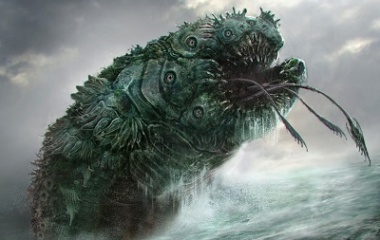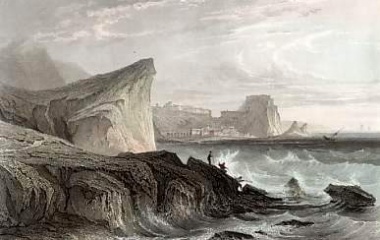Who Is Charybdis?
Charybdis is the child of Gaea and Poseidon. She was originally born a nymph who served her father, but because she displeased Zeus, she was cursed and became a much-feared sea monster residing in the Strait of Messina.
Origin
Originally, as a nymph, Charybdis was charged with the task of flooding dry land in the name of her father’s kingdom. As such, she is credited with being responsible for the ebb and flow of the daily tides throughout the world. This all changed, however, when she managed to attract the attention, and the ire, of the mighty Zeus.
History
Changes
There are two different versions of the story that explains how Charybdis came to be cursed by Zeus, though both have the same end result.
In the first, Charybdis became overzealous in her duties to her father Poseidon, and began flooding too much land. As a result, Zeus trapped and transformed her, forcing her to live at the Strait of Messina on the side closest to Italy.
In the second account, she was stealing and eating sheep belonging to Heracles, which he in turn had stolen from Geryon in his tenth labor. The fact that Charybdis had stolen what Heracles had rightfully kidnapped enraged Zeus, and he punished her as a result.
Regardless of which tale you choose to believe the punishment Charybdis received from Zeus was the same. He transformed and imprisoned her at the Strait of Messina. Trapped either in a cave or under the rock on which a huge fig tree grew, she was allowed to continue her duties, but only three times daily for ebb, and three times daily for flow. Because of this action being centrally located, a huge whirlpool was formed in the strait, creating a danger to any who would attempt to pass. This danger is compounded by the fact that on the Sicily side of the strait lived another monster, Scylla, who would snatch sailors from ships that cruised too near her perch.
Odysseus
Other than general legends of the treachery of the pass in which Charybdis resides, there is very little record of her. There is one notable exception, however, and that is in the story of the fantastic journeys of Odysseus.
Odysseus knew of the dangers presented by Charybdis and Scylla, and asked counsel of Circe for a way to safely pass between them. She advised Odysseus that there was no truly safe passage, but told him that if he were to sail closer to Scylla, he would lose only a few men, while sailing close to Charybdis he would lose his men, his ship, and his life. Odysseus begrudgingly did as advised, and lost six men from his crew.
On his journey back, after all of his crew and most of his ship had been exhausted, Odysseus encountered Charybdis yet again. This time, it was just he and small scraps of his ship that he had formed into a raft. When he encountered Charybdis this time, she was sucking the seas downward. Odysseus survived this by clinging to a limb of the fig tree on her rock. The raft, however, was drawn down into her abyss. Odysseus clung to the tree for hours, waiting for Charybdis to relent the water, and hopefully the raft, when she expelled the ocean. This was the case, and much to Odysseus’ relief, the raft was intact. He recovered it, and quickly paddled away using his hands before Charybdis could suck the raft, his body, and his life into the depths of Poseidon’s sea.
Current Influence
The whirlpool that is the physical representation of Charybdis is now known as Galofalo (or Garofalo). She is still credited with being in control of the daily tidal influences. She, along with Scylla, is also used in a colloquial phrase to represent being trapped between two equally unpalatable choices, “Caught between Scylla and Charybdis.”











Woah.
this is such an interesting story its quite weird.